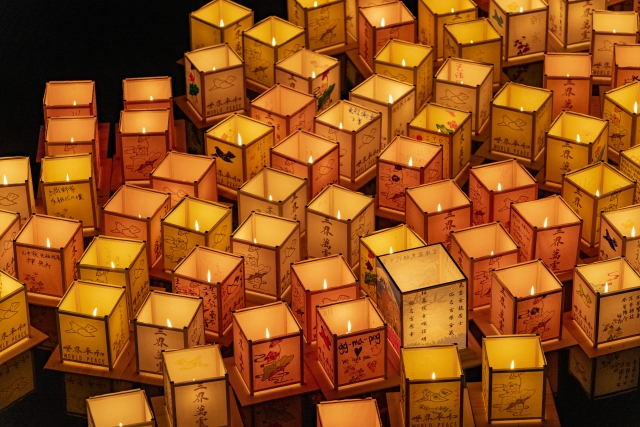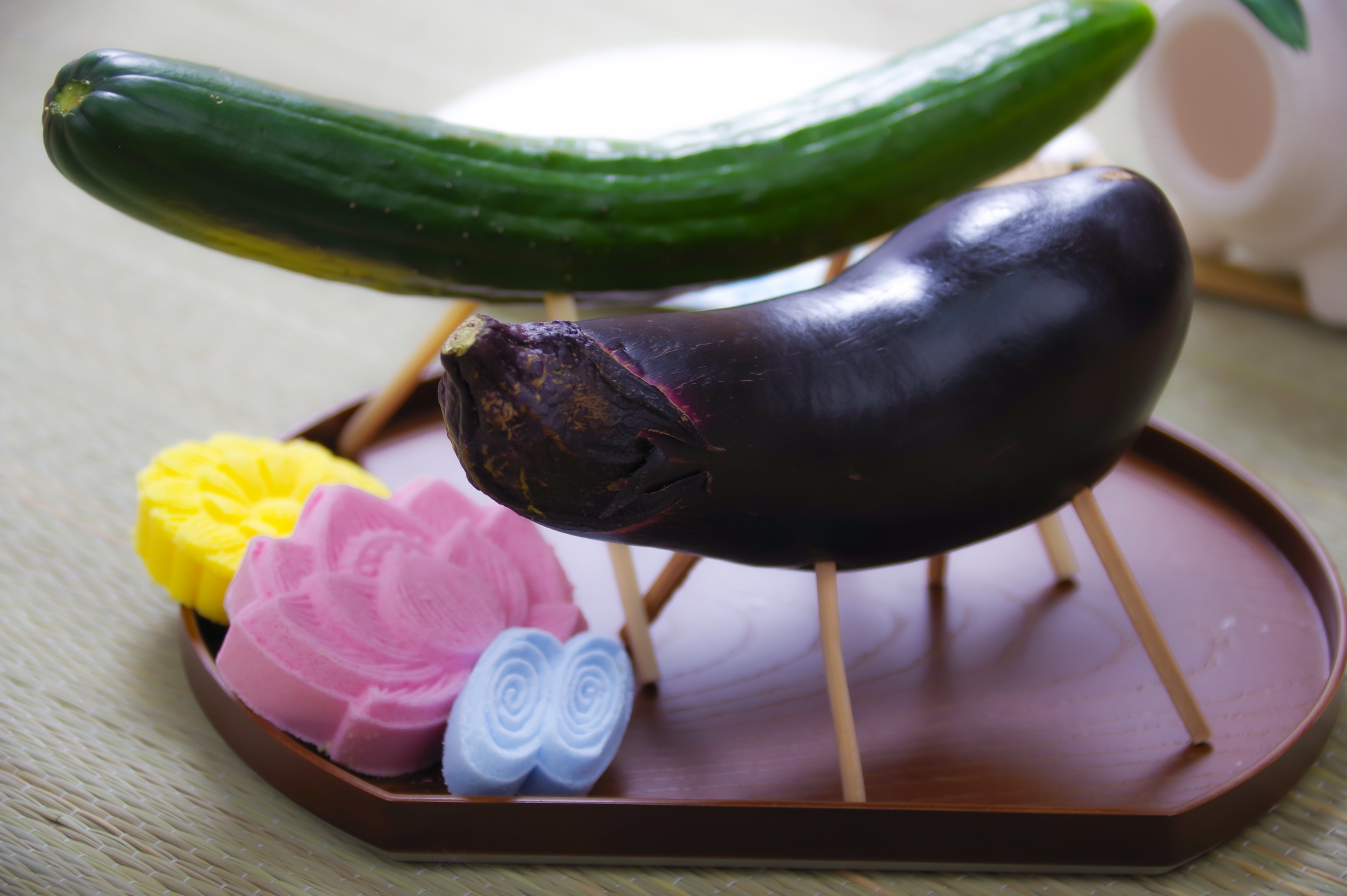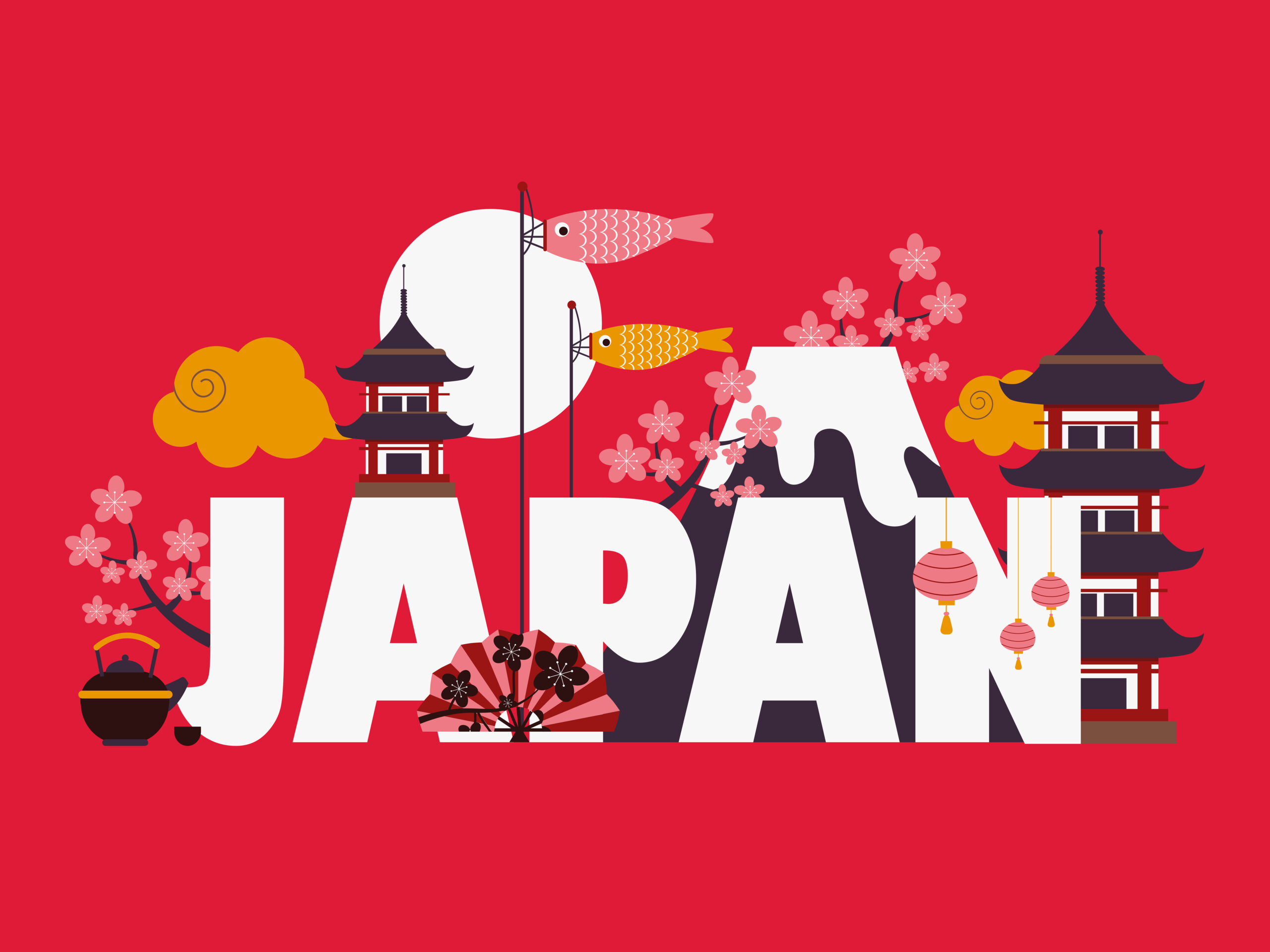There is a Japanese traditional period called “Obon” In Japan.
It is observed from the 13th of August to the 16th of August.
(It may differ depending on the region.)
A lot of people have a holiday to go to their parents’ home around the Obon period.
This article is about “Obon”
Two most important holidays in Japan. “New year(shogatsu)” and “Obon”.
”New year” and “Obon” are considered to be very important family events of the year for Japanese people.
The new year is originally a festival to welcome “Toshigami” to their home and to pray for a rich harvest for the new year.
The article about “New year” and “Toshigami”
As for Obon, The souls of ancestors come back to their home and stay for a couple of days.
During the Obon period, people go back to their parents’ homes and visit their family graves. However The souls of ancestors that are usually in the graves are back home, so the graves are empty.
Don’t you think it’s an inconsistent custom??
It may indicate that Japanese people aren’t very religious.
There is a tradition of Buddhist monks visiting houses to read sutras during Obon.

We usually get a Buddhist monk to visit our home and read sutras for the souls of our ancestors that are back home during the Obon period. It is one of the rituals of the Obon to welcome the souls of our ancestors.
Needless to say, Buddhist monks at this time are very busy.
When I was a child, I visited and stayed at my grandmother’s house during the summer holiday.
In the Obon period, my relatives visited my grandmother’s house and WE read sutras for our ancestors in front of the Buddhist altar.
Traditionally, as I mentioned we get a Buddhist monk to invite our home to read sutras In the Obon period but we didn’t do so.
Instead of inviting busy Buddhist monks, We decided to read sutras by ourselves to welcome our ancestors.”
Our Obon tradition became that around 20 of us reading sutras together for our ancestors.
I believe our ancestors would enjoy it.
Cucumbers and eggplants are traditional offerings of Obon.
Two essential offers of Obon are “Shoryo-uma” (Cucumber horse) and “Shoryo-ushi”(Eggplant cow).
It is believed that “Shoryo-uma” and ”Shoryo ushi” help the ancestors’ souls come back to their home and return.
“Shoryo uma” is made of cucumber and four sticks(toothpicks and disposable chopsticks are commonly used for it), “Shoryo-usi” is made of eggplant and sticks.

“Shoryo uma” represents a quick-footed horse, helps the spirits of ancestors return to their home quickly.
“Shoryo ushi” represents a slow and big cow, enable ancestors to leisurely return to their world with a lot of offerings at the end of the Obon period.
A Japanese ceremony during Obon(the 15th of August).
Floating offerings down a river to send off the souls of ancestors.
There was a river close to my grandmother’s house.
We used to float paper lanterns and other offerings a river on the 15th of August. This event is called ”Toro Nagashi”.

Toro Nagashi is one of the Japanese traditional rituals during the Obon period to send off the spirits of our ancestors to their world.
This event often takes place in areas where close to rivers
Unfortunately, due to the consideration of the effect of pollution on rivers and seas, Shoro Nagashi has been suspended in some places.
It is a shame that such a traditional and enjoyable event has declined on the ground of such a reason.


